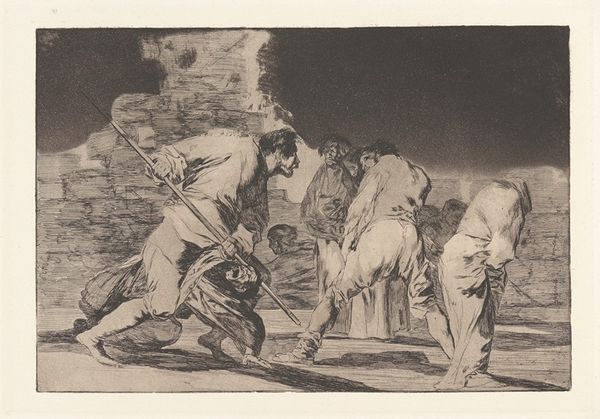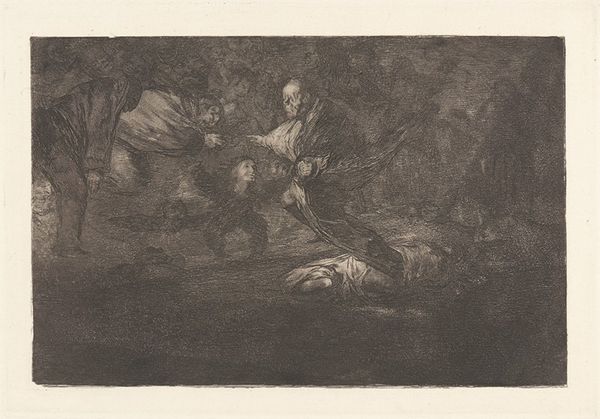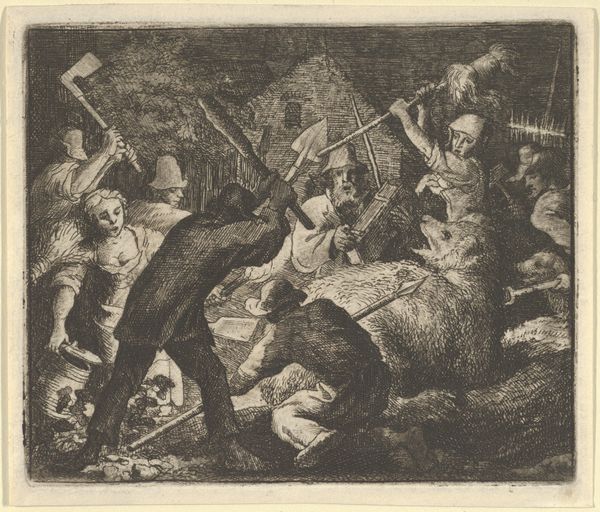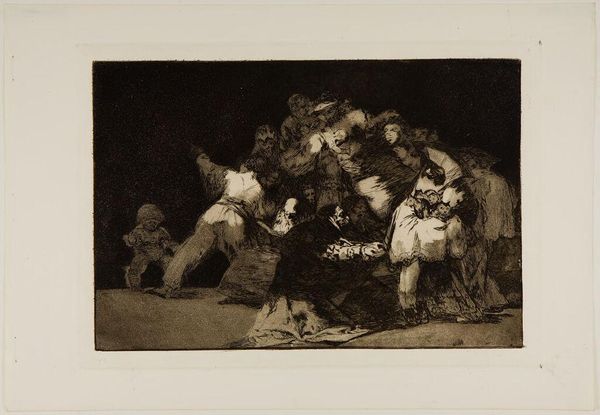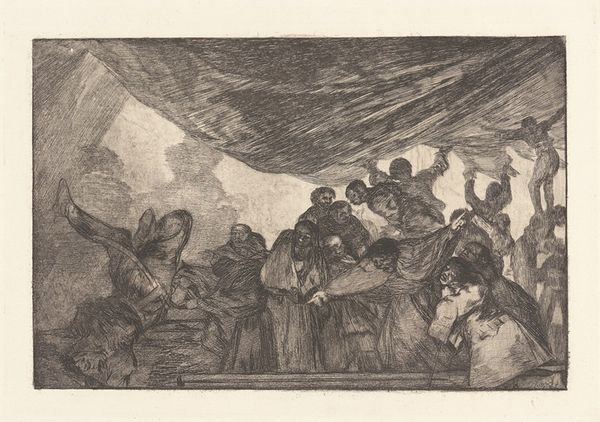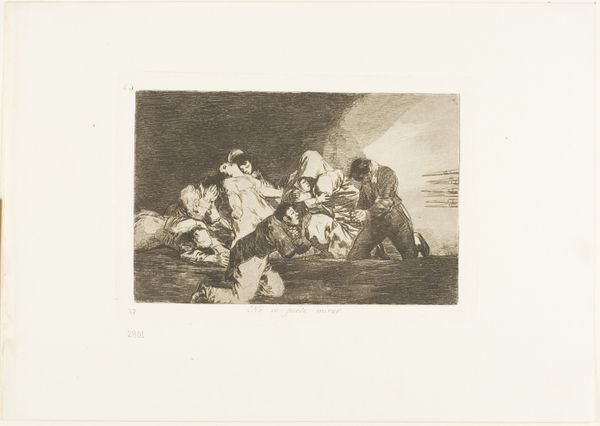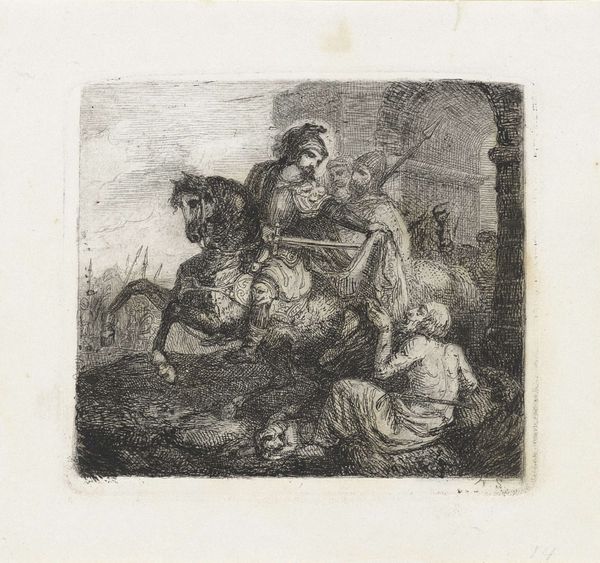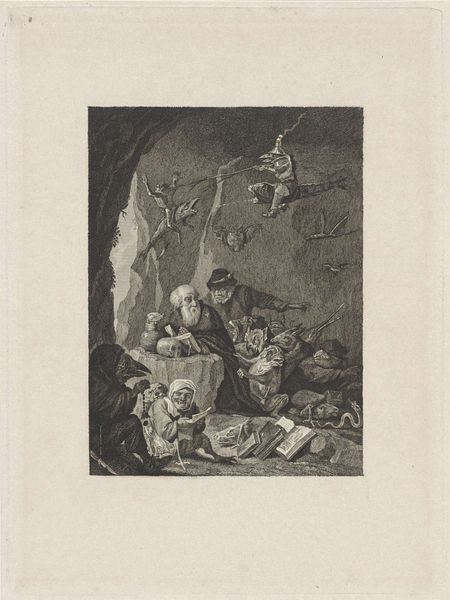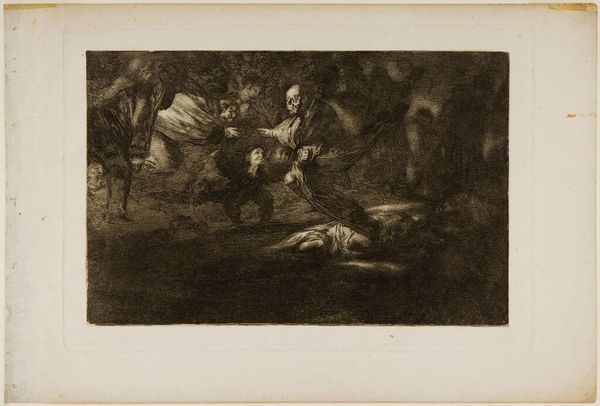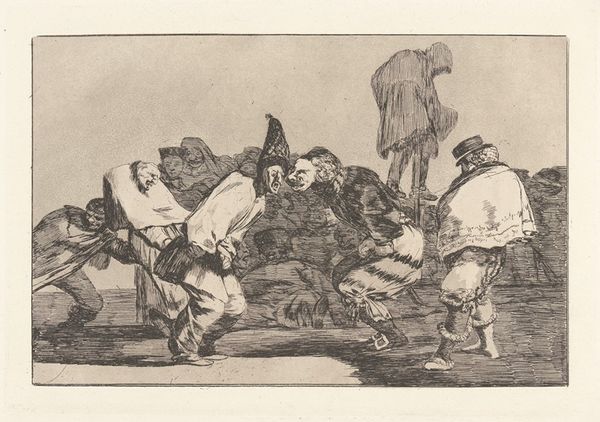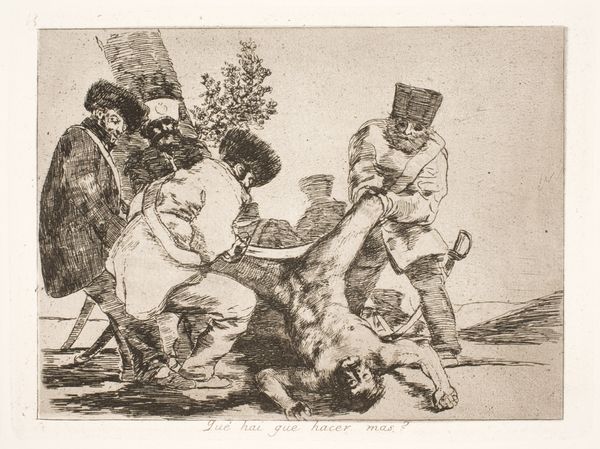![The Claws of a Cat and the Dress of a Devotee-Similar to Vice Is Often Clothed in Virtue’s Habit [General Folly] by Francisco de Goya](/_next/image?url=https%3A%2F%2Fd2w8kbdekdi1gv.cloudfront.net%2FeyJidWNrZXQiOiAiYXJ0ZXJhLWltYWdlcy1idWNrZXQiLCAia2V5IjogImFydHdvcmtzL2M4OGY4ZjIwLTUxNjAtNGI2NS04ZGNlLTFiZmNiZWZjMGQxNC9jODhmOGYyMC01MTYwLTRiNjUtOGRjZS0xYmZjYmVmYzBkMTRfZnVsbC5qcGciLCAiZWRpdHMiOiB7InJlc2l6ZSI6IHsid2lkdGgiOiAxOTIwLCAiaGVpZ2h0IjogMTkyMCwgImZpdCI6ICJpbnNpZGUifX19&w=1920&q=75)
The Claws of a Cat and the Dress of a Devotee-Similar to Vice Is Often Clothed in Virtue’s Habit [General Folly] c. 1813 - 1820
0:00
0:00
Copyright: Public Domain: Artvee
Editor: Here we have Goya's etching and aquatint, "The Claws of a Cat and the Dress of a Devotee-Similar to Vice Is Often Clothed in Virtue’s Habit [General Folly]," created sometime between 1813 and 1820. It's a densely packed image; the figures are almost bursting out of the frame, and it feels incredibly unsettling. What strikes you about this piece? Curator: As a print, this work interests me for its multiple availability. The aquatint and etching process, fundamentally reproducible, becomes a vehicle to disseminate Goya’s commentary on Spanish society. Consider the labor involved, the way Goya utilized these specific materials, the plates themselves becoming almost like a factory for producing images. Editor: That’s a great point. So, beyond the scene itself, the *making* of it is significant? Curator: Precisely. Goya, in choosing this medium, makes the statement accessible, reproducible, consumable by a broader audience, outside the traditional patrons of painting. What about the composition, how does the process affect how he distributes imagery in a world eager to consume it? Editor: The shadows definitely enhance the drama and mystery. I can see how that mass production, alongside its themes, would certainly ignite conversations. I guess I had not initially considered how its creation contributes to the message it carries! Curator: It transforms it. The work ceases to be only an individual statement but a social commentary deliberately manufactured for distribution and, by extension, consumption and critique. The value isn’t solely aesthetic, but resides in its process, distribution, and the subsequent social response. It questions our assumptions about value in art and culture. Editor: This gives me a lot to consider about the impact of artistic creation. Thanks for opening my eyes to it!
Comments
No comments
Be the first to comment and join the conversation on the ultimate creative platform.
